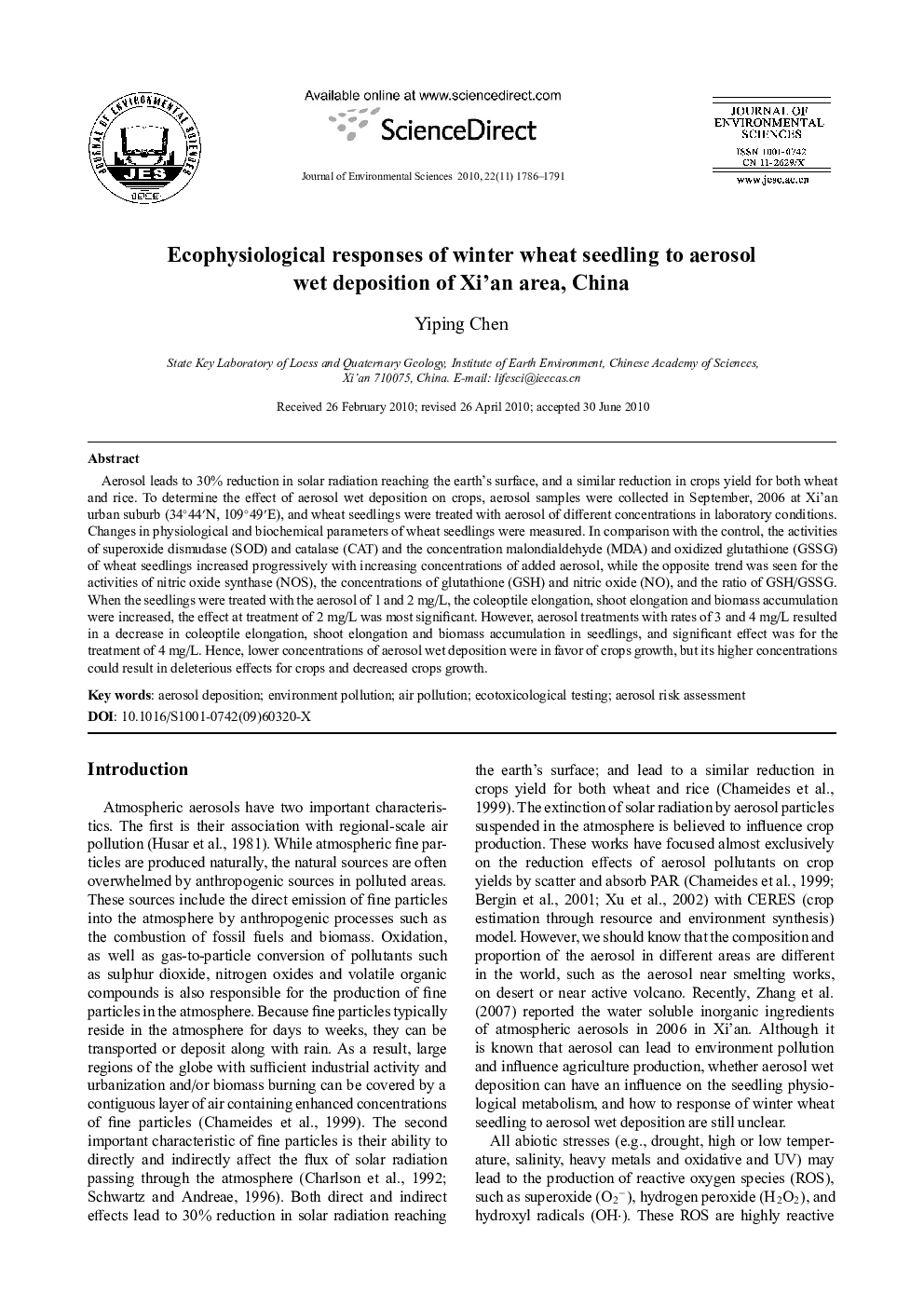| Article ID | Journal | Published Year | Pages | File Type |
|---|---|---|---|---|
| 4455116 | Journal of Environmental Sciences | 2010 | 6 Pages |
Aerosol leads to 30% reduction in solar radiation reaching the earth's surface, and a similar reduction in crops yield for both wheat and rice. To determine the effect of aerosol wet deposition on crops, aerosol samples were collected in September, 2006 at Xi'an urban suburb (34°44′N, 109°49E), and wheat seedlings were treated with aerosol of different concentrations in laboratory conditions. Changes in physiological and biochemical parameters of wheat seedlings were measured. In comparison with the control, the activities of superoxide dismudase (SOD) and catalase (CAT) and the concentration malondialdehyde (MDA) and oxidized glutathione (GSSG) of wheat seedlings increased progressively with increasing concentrations of added aerosol, while the opposite trend was seen for the activities of nitric oxide synthase (NOS), the concentrations of glutathione (GSH) and nitric oxide (NO), and the ratio of GSH/GSSG. When the seedlings were treated with the aerosol of 1 and 2 mg/L, the coleoptile elongation, shoot elongation and biomass accumulation were increased, the effect at treatment of 2 mg/L was most significant. However, aerosol treatments with rates of 3 and 4 mg/L resulted in a decrease in coleoptile elongation, shoot elongation and biomass accumulation in seedlings, and significant effect was for the treatment of 4 mg/L. Hence, lower concentrations of aerosol wet deposition were in favor of crops growth, but its higher concentrations could result in deleterious effects for crops and decreased crops growth.
